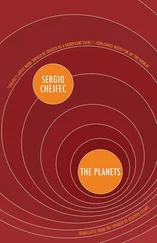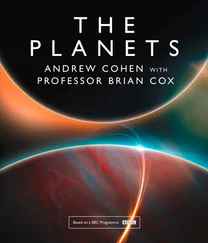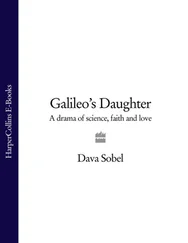‘In the beginning, God created the heaven and the earth,’ the first book of the Bible recounts. ‘And the earth was a formless void and darkness covered the face of the deep, while a wind from God swept over the face of the waters. Then God said, “Let there be light”; and there was light.’
The energy of God’s intent flooded the new heaven and earth with light on the very first day of Genesis. Light’s potent good thus pervaded the evenings and the mornings when the seas separated from the dry lands, and the earth brought forth grass and fruit trees – even before God set the sun, moon and stars in the firmament on the fourth day.
The scientific Creation scenario likewise unleashes the universe in a burst of energy from a void of timeless darkness. About thirteen billion years ago, scientists say, the hot light of the ‘Big Bang’ erupted, and separated itself instantly into matter and energy. The next three minutes of cooling precipitated all the atomic particles in the universe, in the unequal proportions of 75 per cent hydrogen to 25 per cent helium, plus minuscule traces of a few other elements. As the universe expanded exponentially in all directions and continued to cool, it shed no new light for at least a billion years – until it begat the stars, and the stars began to shine.
New stars lit up by pressuring the hydrogen atoms deep within themselves to fuse with one another, yielding helium and releasing energy. Energy fled the stars as light and heat, but helium accumulated inside them, until eventually it, too, became a fuel for nuclear fusion, and the stars melded atoms of helium into atoms of carbon. At later stages of their lives, stars also forged nitrogen, oxygen and even iron. Then, literally exhausted, they expired and exploded, spewing their bounty of new elements into space. The largest and brightest stars bequeathed to the universe the heaviest of elements, including gold and uranium. Thus the stars carried on the work of Creation, hammering out a wide range of raw materials for future use.
As the stars enriched the heavens that had borne them, the heavens gave rise to new generations of stars, and these descendants possessed enough material wealth to build attendant worlds, with salt seas and slime pits, with mountains and deserts and rivers of gold.
In its own beginning, some five billion years ago, the star that is our Sun arose from a vast cloud of cold hydrogen and old stardust in a sparsely populated region of the Milky Way. Some disturbance, such as the shock wave from a nearby stellar explosion, must have reverberated through that cloud and precipitated its collapse. Widely dispersed atoms gravitated into small clumps, which in turn lumped together, and kept on aggregating in an ever-quickening rush. The cloud’s sudden contraction raised its temperature and set it spinning. What had once been a diffuse, cool expanse of indeterminate shape was now a dense, hot, spherical ‘proto-solar nebula’ on the verge of starbirth.
The nebula flattened into a disk with a central bulge, and there in the heart of the disk the Sun came to light. At the moment the Sun commenced the self-consumptive fusion of hydrogen in the multi-million-degree inferno of its core, the outward push of energy halted the inward gravitational collapse. Over the ensuing few million years, the rest of the Solar System formed from the leftover gas and dust surrounding the infant Sun.
The Book of Genesis tells how the dust of the ground, moulded and exalted by the breath of life, became the first man. The ubiquitous dust of the early Solar System – flecks of carbon, specks of silicon, molecules of ammonia, crystals of ice – united bit by bit into ‘planetesimals’, which were the seeds, or first stages, of planets.
Even as they assembled themselves, the planets asserted their individuality, for each one amassed the substances peculiar to its location in the nebula. At the hottest part, flanking the Sun, Mercury materialized from mostly metallic dust, while Venus and Earth matured where rocky dust as well as metal proliferated. Just past Mars, tens of thousands of rocky planetesimals availed themselves of plentiful carbon supplies, but failed to amalgamate into a major planet. These herds of unfinished worlds, called ‘asteroids’, still roam the broad zone between Mars and Jupiter, and their territory, the ‘Asteroid Belt’, marks the Solar System’s great divide: on its near-Sun side lie the terrestrial planets; on the far side, the frigid gaseous giants grew.
The planetesimals at greater distances from the Sun, at lower temperatures, assimilated stores of frozen water and other hydrogen-containing compounds. The first one to reach appreciable proportions then attracted and held on to great quantities of hydrogen gas, and thus grew into Jupiter, the mammoth planet whose mass doubles that of all the others combined. Saturn, too, aggrandized itself with gas. Farther out from the Sun, where dust proved even colder and scarcer, planetesimals took longer to develop. By the time Uranus and Neptune had achieved sufficient mass to pad themselves with hydrogen, the bulk of that gas had already dissipated. At Pluto’s remove, only rock shards and ices could be had.
All the while the planets were forming, projectiles flew through the young Solar System like avenging angels. Worlds collided. Icy bodies struck the Earth and disgorged a few oceans’ worth of water. Rocky bodies rained fire and destruction. In one such cataclysm 4.5 billion years ago, a hurtling Mars-sized object (roughly half as big as Earth) thrust itself into the Earth. The impact and upheaval blasted molten debris into near-Earth space, there to orbit as a disk before cooling and coalescing into the Moon.
The violence of the Solar System’s formative period ended shortly thereafter, about four billion years ago, in a final paroxysm descriptively termed ‘the late heavy bombardment’. In those ancient days, many still-wandering planetesimals crashed into existing planets, which incorporated them at once. Multitudes of other small bodies were forcibly ejected, by gravitational interactions with the giant planets, to a distant land of Nod in the outer Solar System.
The young Sun shone but faintly on the planets, growing gradually hotter and more luminous over its first two billion years, as it stored up helium in its core. At present, in middle age, the Sun continues to brighten while converting seven hundred million tons of hydrogen to helium every second . Even at this galloping rate of consumption, the Sun’s abundant hydrogen guarantees three to five billion more years of dependable light. But inevitably, as the Sun switches over to helium fusion, it will become so hot as to boil away Earth’s oceans and smite the life it spawned there. The ten-fold temperature increase required to burn helium will see the hotter Sun turn red, and swell in size until it swallows up the planets Mercury and Venus, and melts the surface of the Earth. One hundred million years later, when the Sun has reduced more helium to carbon ash, it will shrug off its outer layers and dispatch them past Pluto. A larger star could resort to carbon burning at that point, but our Sun, a relatively small star by the standards of the universe, will be unable to do so. Instead, it will smoulder as an ember, and shed a fading light on the charred cinder where God once walked among men. This dim future, however, lies so far ahead as to allow the descendants of Adam and Noah ample time to find another home.
The glorious Sun of our time, the planets’ progenitor and chief source of energy, embodies 99.9 per cent of the mass in the Solar System. Everything else – all the planets with their moons and rings, plus all the asteroids and comets – account for only .1 per cent. This gross inequity between the Sun and the sum of its companions defines their balance of power, for the universal law of gravity decrees that the massive shall have dominion over the less massive. The Sun’s gravity keeps the planets in orbit and also dictates their speeds: the closer they are to the Sun, the faster they go. The Sun, in turn, bends to the will of the concentrated mass of stars at the centre of our Milky Way Galaxy, around which it orbits once every 230 million years, carrying the planets along with it.
Читать дальше












